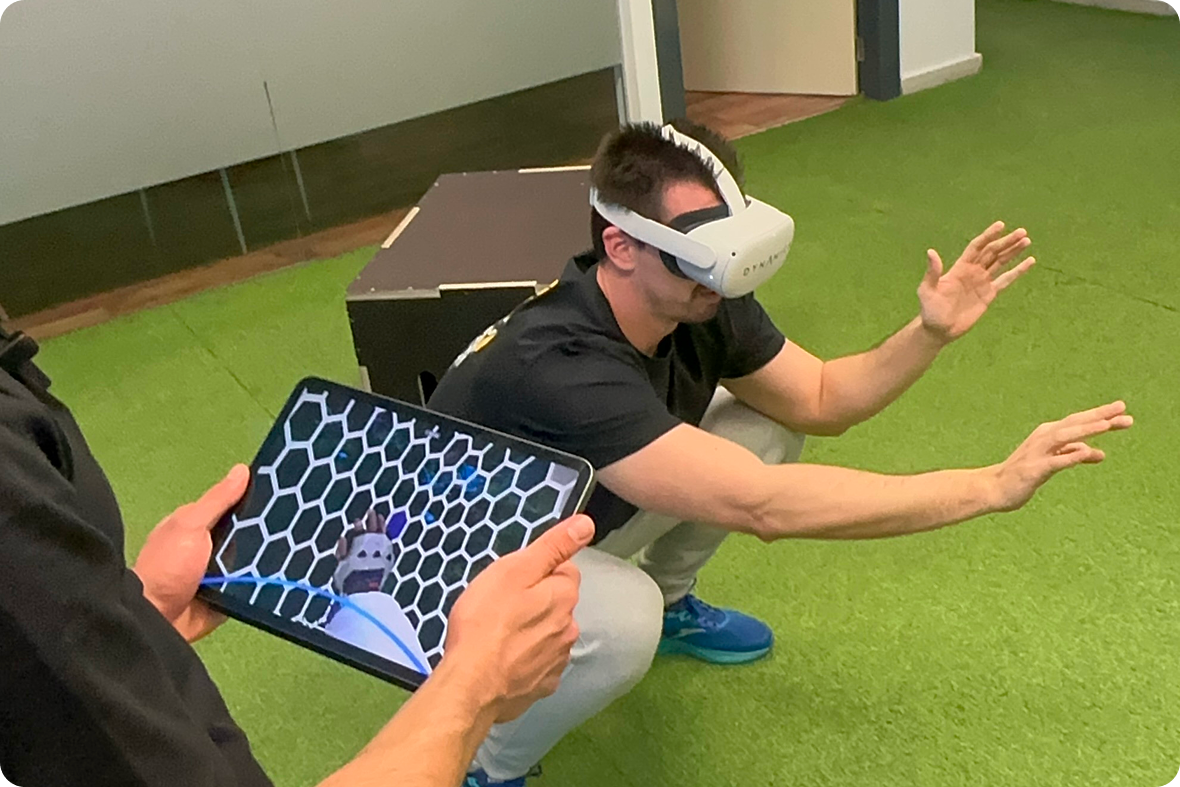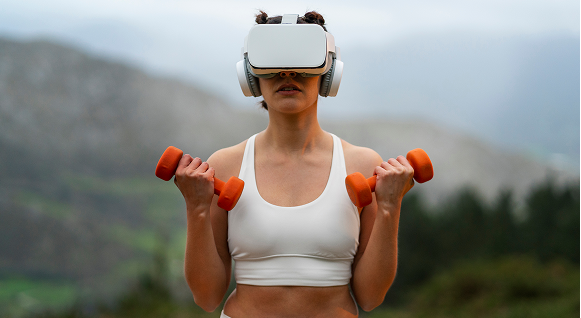How Immersive Virtual Reality Modifies Sensorimotor Uncertainty in People with Pain
Information extracted from: Flores-Cortes, M., Guerra-Armas, J., Pineda-Galan, C., La Touche, R., & Luque-Suarez, A. (2023). Sensorimotor Uncertainty of Immersive Virtual Reality Environments for People in Pain: Scoping Review. Brain sciences, 13(10), 1461. https://doi.org/10.3390/brainsci13101461
Table of Contents
- 1. What is sensorimotor uncertainty and how does it affect people with pain?
- 2. Key factors of Virtual Reality in sensorimotor uncertainty
- 3. Four types of uncertainty in immersive virtual reality.
- 4. Personalization of Virtual Reality to improve rehabilitation.
Interaction with our environment depends on the sensory information we receive and how our body responds to it. In people with chronic pain, this relationship is altered, generating a sensorimotor uncertainty that affects decision making and movement. Immersive Virtual Reality (IVR) emerges as an innovative solution to modify this uncertainty and improve the perception of the environment, corporeality and motor function.
What is sensorimotor uncertainty and how does it affect people with pain?
Through perception and action, our nervous system seeks to reduce prediction errors (uncertainty) to optimize the response to the environment (Peters et al., 2017). Uncertainty modifies our decision making (Loued-Khenissi et al., 2022), therefore, when a person senses threat or doubt, they enter a state of hypervigilance, where their brain prioritizes danger detection over action (Priyadarsini & Mary, 2015).
In the case of chronic pain, this generates a negative loop where sensory uncertainty limits movement, reinforcing the perception of pain.
For movement to be effective, the brain needs to integrate sensory information from the body and the environment. RVI alters this sensorimotor integration by presenting a different environment than the real one, offering visual, auditory and tactile stimuli that can modify pain perception and improve motor functionality (Wolpert & Landy, 2012).
IVR alters this sensorimotor integration by presenting a different environment than the real one, offering visual, auditory, and tactile stimuli that can modify pain perception and improve motor functionality (Wolpert & Landy, 2012).
Key factors of Virtual Reality in sensorimotor uncertainty.
There are three fundamental features in IVR that impact sensorimotor uncertainty:
– Interactivity: Level of user participation in the virtual environment, objects and avatars.
– Immersion: Ability of the IVR to respond to user actions.
– Presence: Subjective sensation of being in a place or environment, whether virtual or real.
Four Types of Uncertainty in Immersive Virtual Reality
Sensorimotor uncertainty in IVR occurs at different levels:
1. Uncertainty in sensory information:
– Tactile stimuli prevail over visual stimuli, so interacting with virtual objects may influence pain intensity (Hoffman, 2021).
– Multisensory integration is altered if there is a lag greater than 600 ms between visual and tactile stimuli (Rubo & Gamer, 2019).
– Congruency between visual and auditory stimuli improves perception of the virtual environment (Naef et al., 2022).
2.Uncertainty about the current status:
– IVR can induce body illusions that increase or reduce pain perception.
– Modifying the appearance of the virtual body can decrease the sensation of pain (Martini et al., 2013).
3. Uncertainty about the transition rules:
– Increasing presence in virtual environments reduces cybernausea and improves performance on motor tasks (Cooper et al., 2018).
– A higher degree of presence is associated with better hypoalgesic effects (Slater, 2018; Gutierrez-Maldonado et al., 2011).
Uncertainty about the results:
– A congruent multisensory experience in RVI improves the user’s embodiment and motor performance.
– Interaction with virtual objects increases presence and reduces pain (Hoffman, 2021).
Personalization of Virtual Reality for improved rehabilitation
To maximize the benefits of IVR for people with chronic pain, it is critical to tailor virtual environments to their individual needs. Factors such as multisensory integration, object interaction and motor task adaptation should be considered to reduce sensorimotor uncertainty and promote effective rehabilitation.
At Dynamics VR, we design Virtual Reality solutions that optimize the patient experience, providing enriched and adaptive environments that reduce pain perception and improve motor function.

Discover how our technology can transform your patients’ recovery.
You may be interested in...

Immersive Virtual Reality: A Revolution in Chronic Pain Management
Immersive Virtual Reality (IVR) is revolutionizing pain management, offering an innovative, non-pharmacological alternative for adults and children…..

The User Experience of Immersive Virtual Reality Induced Hypoalgesia
Immersive Virtual Reality (IVR) is revolutionizing pain management, offering an innovative, non-pharmacological alternative for adults and children…..



